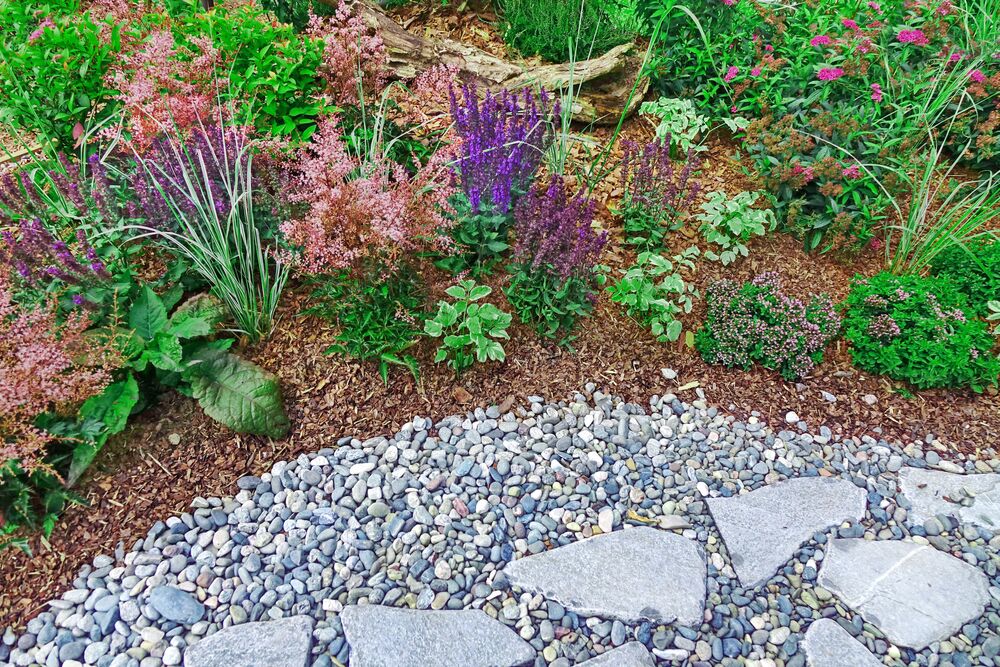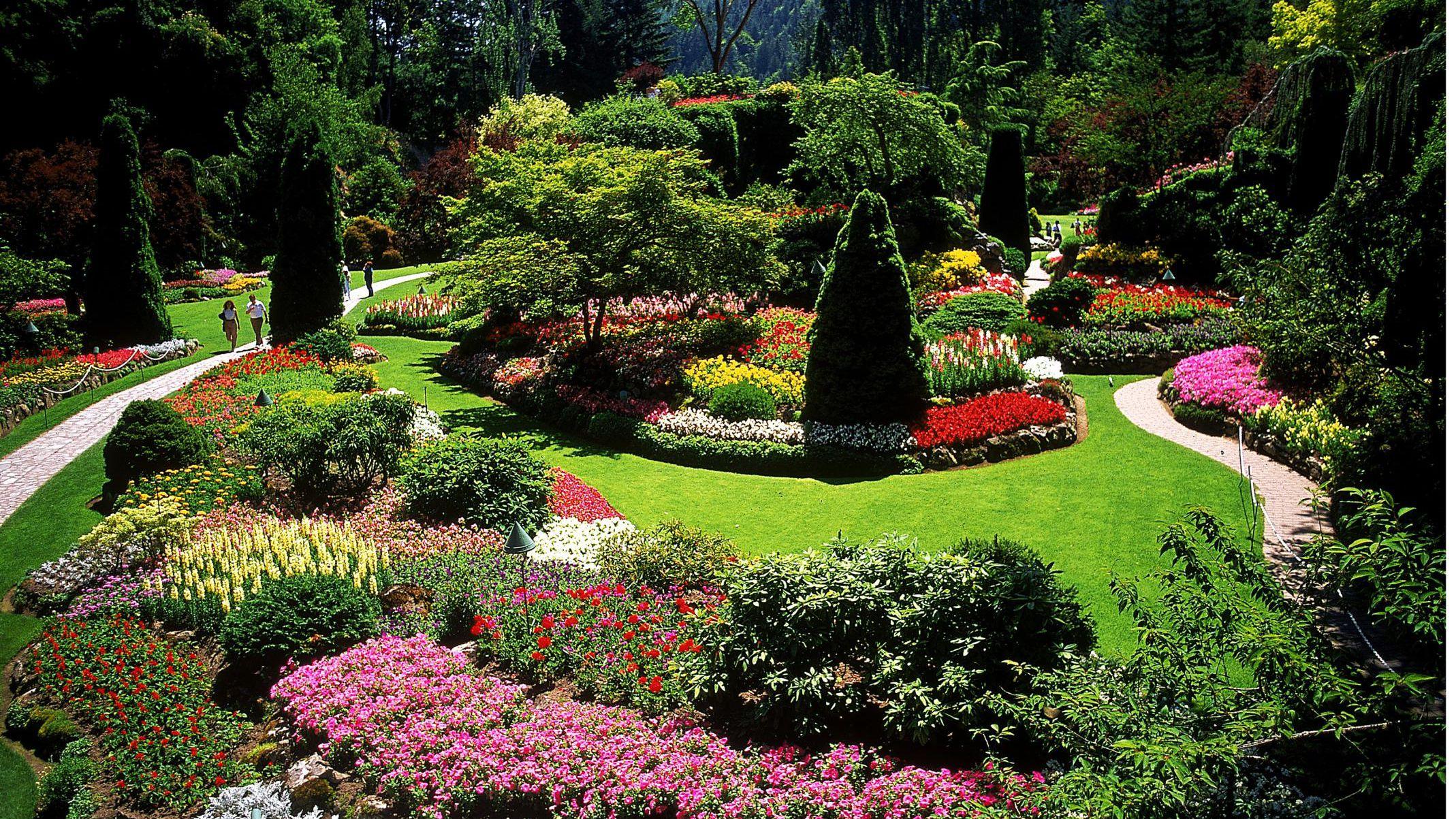The Ultimate Guide to Hardscaping from Landscaping St. Louis MO
Explore Cutting-edge Strategies to Improve Your Property's Aesthetic Through Landscape design
Exploring cutting-edge landscape design strategies can transform a building's visual and capability. By including native plants and hardscaping, homeowners can create lasting and structured atmospheres. In addition, the thoughtful usage of shade theory and water attributes boosts visual allure. As outside areas become expansions of the home, recognizing exactly how to combine these aspects effectively is essential. This conversation will reveal techniques that boost both elegance and functionality in outdoor setups.
Embrace Indigenous Plants for Sustainability
As climate change and city advancement remain to affect local ecological communities, accepting native plants for sustainability has actually become significantly essential. Indigenous plants are well-adapted to regional environments, dirt kinds, and wildlife, needing much less water and less chemical inputs compared to non-native types. Their development supports neighborhood biodiversity, promoting environments for pollinators, birds, and various other wildlife. By including native vegetation into landscapes, property proprietors can create lively, lasting atmospheres that mirror the region's all-natural beauty.Furthermore, indigenous plants enhance soil wellness by advertising useful bacteria and reducing erosion. They also contribute to carbon sequestration, assisting reduce environment change impacts. The visual allure of native gardens can be equally as charming as conventional decorative layouts, showcasing seasonal blooms and varied structures. Eventually, accepting native plants not only supports ecological equilibrium yet also enriches the neighborhood's aesthetic landscape, urging a much deeper link to the environment.
Include Hardscaping for Structure and Function
Hardscaping plays a necessary duty in enhancing both the structure and capability of exterior rooms - Landscaping St. Louis MO. By choosing long lasting materials and tactically preparing the layout, property owners can create versatile settings that complement their landscape design. The integration of hardscape elements not just includes aesthetic passion yet likewise serves practical purposes, such as enhancing availability and managing water drainage
Benefits of Hardscaping
While lots of property owners focus primarily on softscaping elements, incorporating hardscaping right into a landscape layout uses many benefits that improve both structure and feature. Hardscaping, that includes features such as patio areas, walkways, and preserving wall surfaces, offers a strong structure for outdoor rooms. It develops defined locations that enhance activity and functionality, encouraging exterior activities and celebrations. Furthermore, hardscaping can help take care of water drain, decreasing erosion and advertising much healthier plant. Moreover, these functions add visual appeal, adding to the overall layout harmony of a residential property. By stabilizing softscaping with hardscaping, property owners can create aesthetically striking landscapes that are not just stunning but likewise practical and lasting for years ahead.
Materials for Long Lasting Style
Including hardscaping not just enhances the visual appeal of outside rooms however additionally relies greatly on the choice of materials that assure resilience and capability. High-quality concrete, natural rock, and brick are popular choices for pathways, patio areas, and wall surfaces, providing a robust structure that withstands weather condition components and heavy foot web traffic. Compound products offer the appearance of timber without the maintenance, making them appropriate for outdoor decking and secure fencing. Additionally, permeable pavers enable for efficient drain, promoting environmental sustainability while preserving architectural integrity. Metal accents such as barriers and sculptures can present modern-day panache and resilience. By selecting the right products, homeowner can create visually striking landscapes that stand the test of time and enhance their exterior living experience.

Planning Functional Outdoor Spaces
Just how can one successfully plan exterior areas that stabilize appearances with performance? Incorporating hardscaping components is necessary in accomplishing this balance. Attributes such as outdoor patios, sidewalks, and keeping wall surfaces not only provide framework but also boost the aesthetic appeal of the landscape. By strategically placing these aspects, one can develop defined locations for tasks like entertaining, gardening, or relaxation.Moreover, picking materials that match the natural environments can elevate the total aesthetic. For circumstances, using all-natural rock or ornamental pavers can integrate flawlessly with greenery. Furthermore, hardscaping can assist in drainage and soil stablizing, ensuring a sustainable outdoor atmosphere. Ultimately, thoughtful planning that combines hardscaping with landscape style leads to inviting, practical exterior rooms that accommodate numerous demands.
Produce Multi-Functional Rooms for Outdoor Living
Creating multi-functional areas for outdoor living improves the use and enjoyment of a landscape. By integrating outside eating areas and relaxation areas, homeowners can optimize their exterior experience. These thoughtfully developed areas promote social interaction while providing serene environments for relaxing.

Exterior Eating Areas
While numerous homeowners seek to boost their outside areas, changing a yard into a practical dining location can raise both looks and functionality. Outdoor eating locations offer a welcoming atmosphere for events, permitting friends and families to delight in dishes in a natural setting. Including redirected here stylish furnishings, such as weather-resistant eating tables and chairs, creates a comfortable experience. Adding features like pergolas or color sails can use protection from the components while supplying visual rate of interest - Landscaping St. Louis MO. Decorative elements, such as string lights or lanterns, can improve atmosphere throughout evening dishes. Furthermore, incorporating close-by planters or yard beds includes greenery, producing a natural appearance. Ultimately, a well-designed outside you can find out more eating room fosters link and pleasure, enhancing the total exterior living experience
Leisure Areas
Relaxation areas work as necessary components of outdoor living, providing a serene escape where people can take a break and reenergize. These rooms can be artistically designed to incorporate different components that enhance convenience and harmony. Integrating functions such as hammocks, lounge chairs, or exterior couches welcomes leisure while including visual charm. Soft illumination options, like string lights or lights, can create a comfortable atmosphere for evening celebrations. Additionally, integrating natural environments such as water features, plants, and landscaping can even more improve the ambiance. By blending functionality with elegance, relaxation zones come to be flexible areas for reflection, analysis, or enjoying silent minutes with nature, ultimately changing outside areas into inviting resorts that accommodate both recreation and social communication.
Usage Color Concept to Style Vibrant Landscapes
Shade concept plays a critical duty in developing vibrant landscapes, as it affects the psychological and psychological responses of viewers. By recognizing how shades interact, landscape developers can develop unified environments that evoke specific sensations. For example, cozy colors such as reds and oranges can invigorate a space, making it really feel lively and welcoming, while cooler tones like blues and eco-friendlies advertise peace and relaxation.Incorporating different shades can also enhance visual passion. Designers frequently make use of complementary color pattern-- colors contrary each various other on the color wheel-- to create striking focal points. In addition, using seasonal plants allows for a dynamic color combination that transforms throughout the year, keeping aesthetic appeal.Moreover, the tactical positioning of shades can guide the customer's eye through the landscape, creating a sense of flow and unity. Inevitably, a thoughtful application of color concept elevates a landscape, improving its aesthetic and emotional influence.

Execute Water Features for Harmony and Allure
Incorporating water functions right into landscape design can markedly improve both tranquility and aesthetic appeal. These components, such as fish ponds, fountains, or waterfalls, present comforting sounds and captivating visuals that draw interest and develop a serene ambience. The gentle circulation of water can mask unwanted noise, supplying a relaxed hideaway from the outdoors world.Moreover, water features attract wild animals, such as birds and butterflies, enhancing the environment and adding vibrant life to the landscape. Tactically placed, they can offer as prime focus, leading the viewer's eye and enhancing the overall composition of the outdoor space.In enhancement to visual benefits, water attributes can also enhance the microclimate, giving cooling results during hot weather. When created attentively, these setups balance with bordering plants and hardscapes, producing a cohesive and welcoming environment. Inevitably, water features are a versatile device discover here in landscape design, promoting elegance and tranquility.
Explore Vertical Horticulture Methods
Exactly how can vertical horticulture transform minimal spaces into rich, environment-friendly resorts? This cutting-edge technique makes use of walls, fencings, and trellises to produce a dynamic tapestry of plant, also in confined areas. By making the most of upright room, homeowners can grow a selection of plants, from herbs and veggies to decorative flowers, boosting both aesthetic allure and functionality.Vertical gardens not just give a stunning visual effect yet additionally enhance air quality and advertise biodiversity. They can be tailored to suit different style styles, from contemporary minimal to rustic beauty. Additionally, incorporating modular planters permits simple reformation and seasonal updates, making certain the garden continues to be dynamic throughout the year.Choosing the right plants is crucial; selecting those that grow in vertical configurations will produce the most effective outcomes. On the whole, experimenting with upright gardening strategies can efficiently redefine exterior rooms, turning them right into green shelters that welcome leisure and pleasure.
Use Illumination to Improve Ambiance and Security
While efficient landscape design can transform outside areas, the calculated use illumination plays a crucial duty in boosting both atmosphere and safety and security. Thoughtfully put outside lights can highlight architectural features, garden paths, and one-of-a-kind plants, developing an inviting environment. Soft illumination from lights or string lights can stimulate a relaxing setting for night gatherings, while spotlighting can highlight prime focus such as sculptures or water features.In enhancement to visual enhancements, lighting considerably adds to safety. Well-lit pathways and entrance points minimize the threat of crashes, making navigating easier after dark. Motion-sensor lights provide an included layer of safety by enlightening locations when activity is detected. By integrating numerous lights strategies, homeowners can accomplish an unified balance in between beauty and performance, making certain that their outdoor spaces stay both aesthetically enticing and protected. Generally, effective exterior lighting is a critical element of comprehensive landscape style.
Regularly Asked Inquiries
How Can I Choose the Right Plants for My Climate?
Choosing the right plants for a particular climate includes looking into neighborhood climate patterns, dirt problems, and indigenous varieties. Consulting horticulture sources and local professionals can give important insights right into ideal plant options for excellent development and sustainability.
What Are the Upkeep Needs for Various Landscape Design Attributes?
The upkeep requirements for landscape design attributes differ commonly. Some plants require routine pruning and watering, while hardscapes demand periodic cleaning and repair work. Recognizing details needs assurances durability and excellent appearance of each feature in the landscape.
Exactly how Do I Allocate a Landscaping Project?
Budgeting for a landscape design task calls for reviewing prices for materials, labor, and design. Landscaping St. Louis MO. One ought to prioritize requirements versus wants, seek numerous quotes, and designate a contingency fund for unexpected costs to ensure financial usefulness
Can I Landscape My Property Myself, or Should I Employ a Professional?
The private contemplated whether to embark on the landscape design job separately or enlist a specialist. Evaluating individual skills versus prospective proficiency, they identified that each choice lugged special benefits and challenges, affecting their final choice significantly.
What Are the very best Times of Year for Landscaping Projects?
The most effective times for landscaping tasks generally consist of very early springtime and very early fall. These periods use favorable climate condition, allowing plants to develop origins prior to extreme temperature levels, ensuring a successful and vibrant landscape makeover.